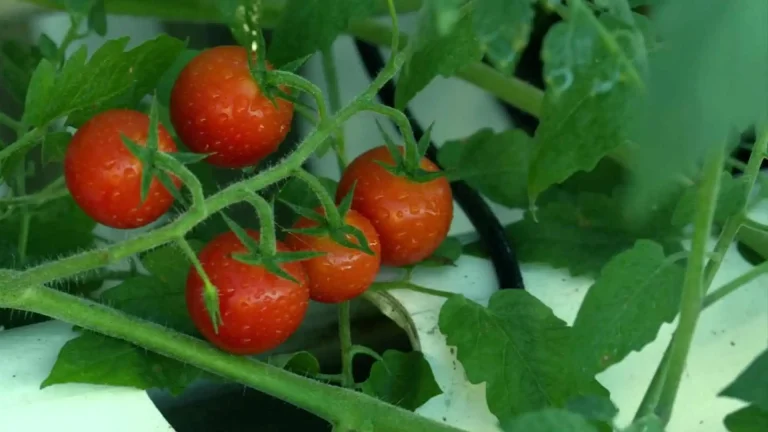Complete Guide to Strawberry home gardening 2025
Strawberry home gardening is a fun and rewarding activity. With the right care, anyone can enjoy fresh, homegrown strawberries. In 2025, more people are choosing strawberry home gardening due to health benefits and the joy of harvesting it themselves. However, growing strawberries can come with challenges, like finding the right soil and keeping pests away.

To get started, choose a good location for your plants. Strawberries need lots of sunlight and well-drained soil. You can grow them in containers if you have limited space. Make sure to water them regularly and keep an eye out for pests. By following these simple steps, you’ll be able to grow delicious strawberries in your own backyard with strawberry home gardening.
If you’re interested in learning about grow lemon at home, please visit Lemon Home Gardening.
How to Plant Strawberries – Step by Step Guide
Planting strawberries at home is an easy and rewarding experience. Start by selecting the right location with full sunlight. Prepare the soil with organic compost for good drainage. You can either use bare-root plants or strawberry seeds for planting.
For a thriving strawberry home gardening setup, make sure to follow the proper spacing guidelines to avoid overcrowding. This allows the plants to grow freely and access essential nutrients. Proper spacing also reduces the risk of diseases and ensures better airflow around the plants. Aim for about 12-18 inches between each plant for optimal growth.
Choosing the Best Strawberry Varieties for Your Strawberry home gardening
Different strawberry varieties suit different climates and garden needs. June-bearing strawberries give a big harvest in early summer, while everbearing varieties provide fruit throughout the season. Choose a variety based on your climate and preferred harvest time.
Preparing the Soil for Strawberry Plants
Before planting strawberries, ensure the soil is rich and well-draining. Mix in organic compost to improve soil structure and provide essential nutrients. Strawberries prefer slightly acidic soil with a pH between 5.5 and 6.5.
To ensure the best growth and yield in your Strawberry home gardening, it’s important to understand the soil and temperature requirements of each strawberry variety. The following table compares these factors to help you choose the right variety for your growing conditions.
| Strawberry Variety | Soil Type | Soil pH |
|---|---|---|
| June-bearing | Well-draining, loamy soil | Slightly acidic (5.5-6.5) |
| Everbearing | Loamy or sandy soil | Slightly acidic to neutral (6.0-7.0) |
| Day-neutral | Well-drained, fertile soil | Slightly acidic (5.5-6.5) |
| Alpine | Well-draining, poor to average soil | Slightly acidic (5.5-6.5) |
How to Plant Strawberry Seeds and Bare Root Plants
Plant strawberry seeds indoors 6-8 weeks before the last frost. Sow them in a shallow tray with a light soil covering and keep them moist. Once seedlings are strong, transplant them outdoors after the last frost.
Bare-root strawberry plants are easier to plant. Choose a sunny spot with well-drained soil and space the plants 12-18 inches apart. Plant them with the crown slightly above the soil and water thoroughly.
Why Grow Strawberries at Home?
Strawberry home gardening provides fresh, healthy fruit while saving money. Homegrown strawberries are also tastier and free from pesticides. Whether you have a large garden or just a small balcony, strawberry home gardening is easy and offers great rewards.
Benefits of Growing Strawberries in Your Garden
Growing strawberries in your garden offers numerous benefits. They’re packed with vitamins and antioxidants, contributing to a healthy diet. Plus, having strawberries in your garden enhances the aesthetic and adds a touch of sweetness to your outdoor space.
Essential Care Tips for Strawberry Plants
Proper care is key to a thriving Strawberry home gardening. Regular watering, well-balanced fertilizer, and disease prevention help ensure healthy plants and high yields. Consistent care keeps your plants strong and productive.
Watering and Fertilizing Your Strawberry Plants
Strawberries need consistent moisture to grow, but avoid overwatering, as this can lead to root rot. Water them deeply but infrequently. Use a balanced fertilizer once the plants begin to flower and again after the harvest to keep them strong.
How to Protect Strawberries from Pests and Diseases
Strawberries are susceptible to pests like aphids, slugs, and beetles. Use organic solutions like neem oil or insecticidal soap to control pests safely. Keep an eye out for fungal diseases like powdery mildew, and remove infected leaves to prevent spread.
The Importance of Mulching and Pruning
Mulching around strawberry plants helps retain moisture and prevent weed growth. Use organic mulches like straw or leaves, which also enrich the soil. Pruning dead leaves and stems improves air circulation, reducing the risk of disease and promoting healthy growth.
Growing Strawberries in Containers – A Convenient Solution
Container gardening makes strawberry home gardening possible in any space, from balconies to patios. Containers allow for easy management of soil quality, water drainage, and pest control. Choose a container that’s at least 8-10 inches deep for optimal growth.
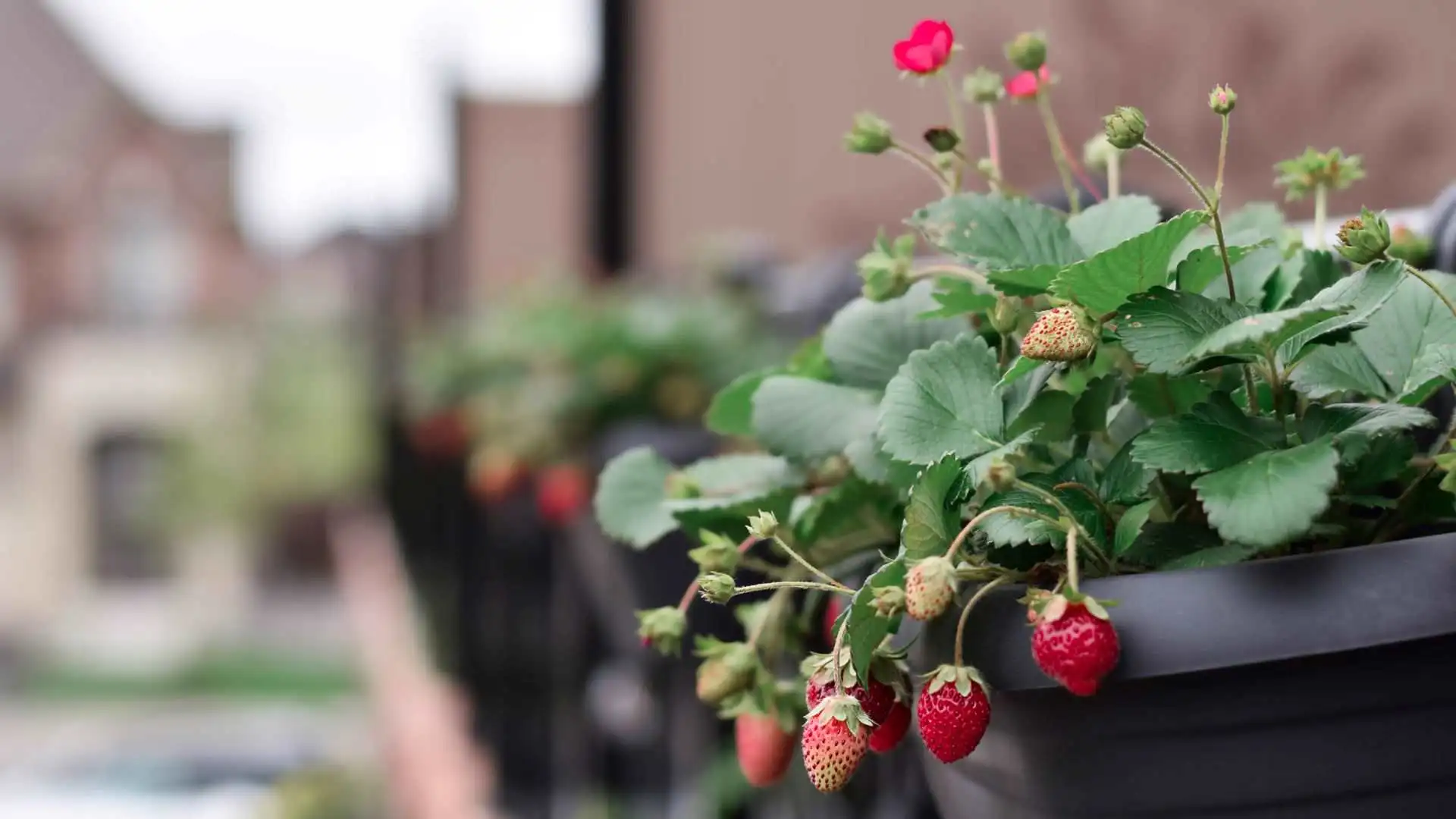
Choosing the Right Containers for Strawberries
Strawberries can thrive in containers, making them perfect for small spaces. Choose containers with drainage holes and fill them with well-draining soil. Container gardening allows you to control soil quality and protect plants from pests.
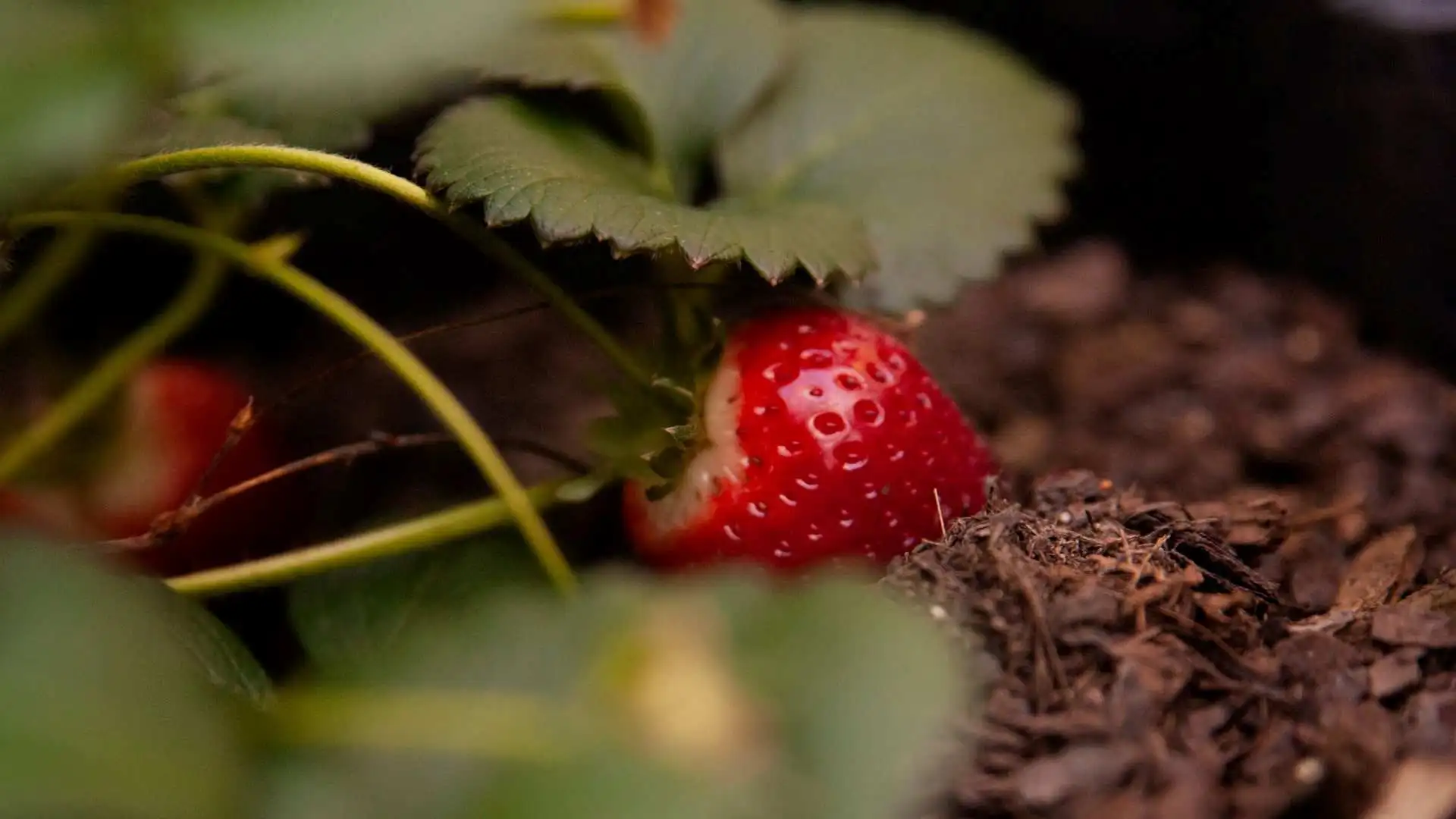
Containers with good drainage are essential for growing healthy strawberry plants. You can use plastic, ceramic, or terracotta pots, but ensure they are large enough to allow proper root development.
How to Grow Strawberries in Hanging Baskets or Pots
Hanging baskets are a great solution for small spaces and add a charming touch to your garden. Ensure the baskets are deep enough and have proper drainage to avoid waterlogging. Strawberries grown in hanging baskets receive more sun exposure, which encourages better fruit production.
Tips for Growing Strawberries Successfully in Small Spaces
Maximize your available space by choosing compact strawberry varieties that are well-suited for small areas. Raised beds, window boxes, or hanging baskets can all be used effectively. With proper care, strawberries can thrive even in limited spaces.
Tips for Avoiding Overcrowding in Small Pots
Overcrowding in small pots can lead to stunted growth and fewer strawberries. Limit the number of plants per container and use larger pots if growing multiple strawberries. Prune the plants regularly to encourage airflow and healthy growth.
Understanding Plant Growth During Strawberry home gardening
Strawberry plants go through several stages of growth, starting with germination. Seeds usually take about 3-4 weeks to sprout, and it takes 4-6 months for the first harvest, depending on the variety. Once established, strawberries will continue producing fruit each season.
Understanding the growth timeline helps you care for your plants at every stage. From planting to harvesting, strawberries develop leaves, flowers, and fruit in a specific order. Keep an eye on your plants to ensure they’re thriving and ready for a bountiful harvest.
How Long Does It Take Strawberries to Grow?
Strawberries typically take 3-4 weeks to germinate from seeds. If you’re planting bare-root plants, you can expect fruit within 4-6 months. After the first harvest, strawberries will continue producing fruit each year, especially if they’re well cared for. Some varieties, like everbearing, may even produce fruit throughout the season.
The Strawberry Growth Cycle – From Planting to Harvest
The strawberry growth cycle begins with planting and the formation of leaves. After a few weeks, the plants flower, and soon after, the flowers turn into fruit. It takes about 4-6 weeks for the strawberries to ripen, and they should be picked when fully red for the best flavor.
Strawberry Season – When and How to Harvest Fresh Strawberries
Strawberries are ready to harvest when fully red and fragrant. June-bearing varieties are harvested in early summer, while everbearing types yield fruit all season. Pick them in the morning to keep them fresh and flavorful.
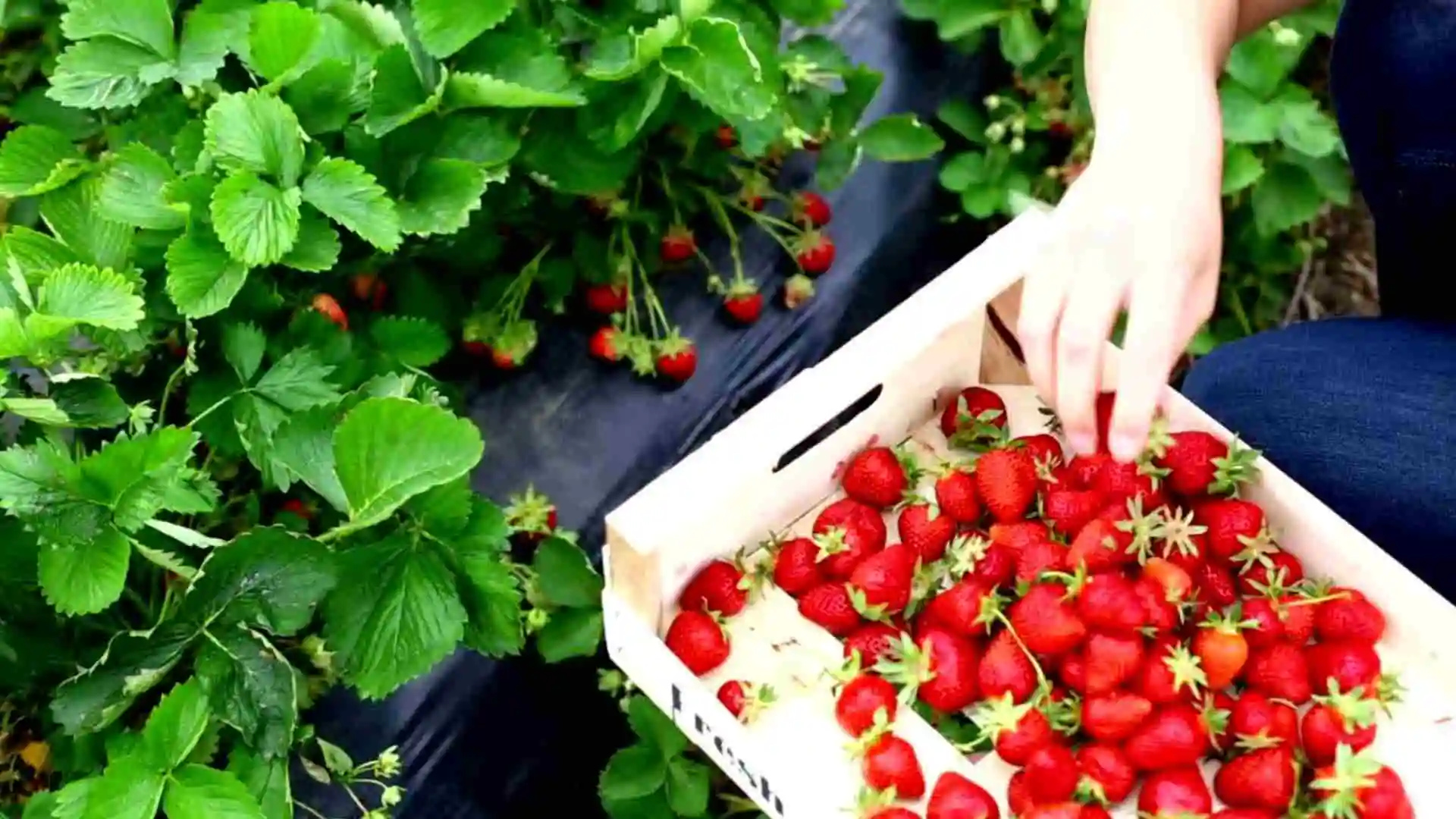
Advanced Tips for Successful Strawberry home gardening
To maximize your strawberry yield, it’s essential to focus on advanced care techniques. Proper soil management, timely pruning, and pest control are key to growing strong, productive plants. These tips help you achieve bigger, better strawberries with less effort.
Growing Organic Strawberries at Home
To grow organic strawberries, it’s important to avoid synthetic chemicals and focus on natural methods that promote plant health and sustainability. Here are some key practices for organic Strawberry home gardening:
How to Encourage Bigger and Better Strawberry Yields
To get bigger strawberries, ensure they receive plenty of sunlight and water. Remove any runners early to direct the plant’s energy into fruit production. Fertilize with organic compost during the growing season to boost plant health and increase yields.
Best Practices for Growing Strawberries Year Round
To grow strawberries year-round, choose everbearing varieties and create an environment that supports continuous growth. Greenhouses or indoor growing setups can help maintain temperature and light levels. With the right care, you can enjoy fresh strawberries every month.
Where and How to Grow Strawberries Effectively
Choosing the right location is key to a successful strawberry harvest. Whether in a garden, container, or indoors, proper conditions are essential. Full sun, well-drained soil, and enough space for growth are important. These factors lead to stronger plants and better yields.
Best Locations for Planting Strawberries in Your Garden
Strawberries thrive in full sun, requiring at least 6 hours of sunlight each day. They also prefer well-draining, slightly acidic soil. Plant them in raised beds or containers to improve soil drainage and avoid waterlogging, which can harm the roots.
Growing Strawberries Indoors vs Outdoors
Strawberries can be grown both indoors and outdoors, but each method has its advantages. Outdoors, strawberries need full sun and well-drained soil. Indoors, use grow lights and maintain proper temperature and humidity for year-round production, especially during colder months.
Here’s a comparison of growing strawberries indoors vs outdoors:
| Factor | Indoors | Outdoors |
|---|---|---|
| Sunlight | Use grow lights to mimic sunlight | Requires 6+ hours of direct sunlight |
| Temperature | Maintain a stable indoor temperature (60-75°F) | Grows best in temperate climates (60-80°F) |
| Soil | Use containers with well-draining soil | Requires well-draining, slightly acidic soil |
| Humidity | Maintain humidity with a humidifier | Natural humidity, but may need watering during dry spells |
| Harvesting Season | Year-round with proper care | Seasonal harvest (spring/summer, depending on variety) |
| Space Requirements | Limited space (use containers) | Requires more space for garden planting |
Climate Considerations for Growing Strawberries Successfully
Strawberries grow best in temperate climates, with temperatures ranging from 60°F to 80°F (15°C to 27°C). In cooler climates, consider using greenhouses or cold frames to extend the growing season. Warmer regions can benefit from heat-tolerant varieties that can handle the summer heat.
Common Mistakes to Avoid When Growing Strawberries
Avoiding common mistakes helps your strawberry plants thrive during Strawberry home gardening. Proper care and early attention to issues keep plants healthy. This leads to a better and more productive harvest.
Overcrowding Strawberries in Containers
Overcrowding in containers can lead to stunted growth and fewer strawberries. Ensure each plant has enough space to spread its roots and grow. Consider using larger containers for multiple plants or stick to one per pot.
Ignoring Soil Quality and Drainage
Poor soil quality or improper drainage can harm strawberry plants. Always use well-draining soil to prevent root rot and ensure proper nutrient absorption. Adding organic matter like compost improves soil fertility and structure.
Forgetting About Regular Maintenance for Healthy Plants
Neglecting regular care can lead to weak plants and reduced yields. Make sure to water consistently, remove dead leaves, and check for pests. Pruning and fertilizing at the right times will help your plants grow strong and produce more fruit.
Strawberry Plant Varieties – Which One is Right for You?
Choosing the right strawberry variety is essential for a successful garden during Strawberry home gardening. Different varieties suit different climates, spaces, and harvest preferences. Understanding these options will help you grow the best strawberries for your needs.
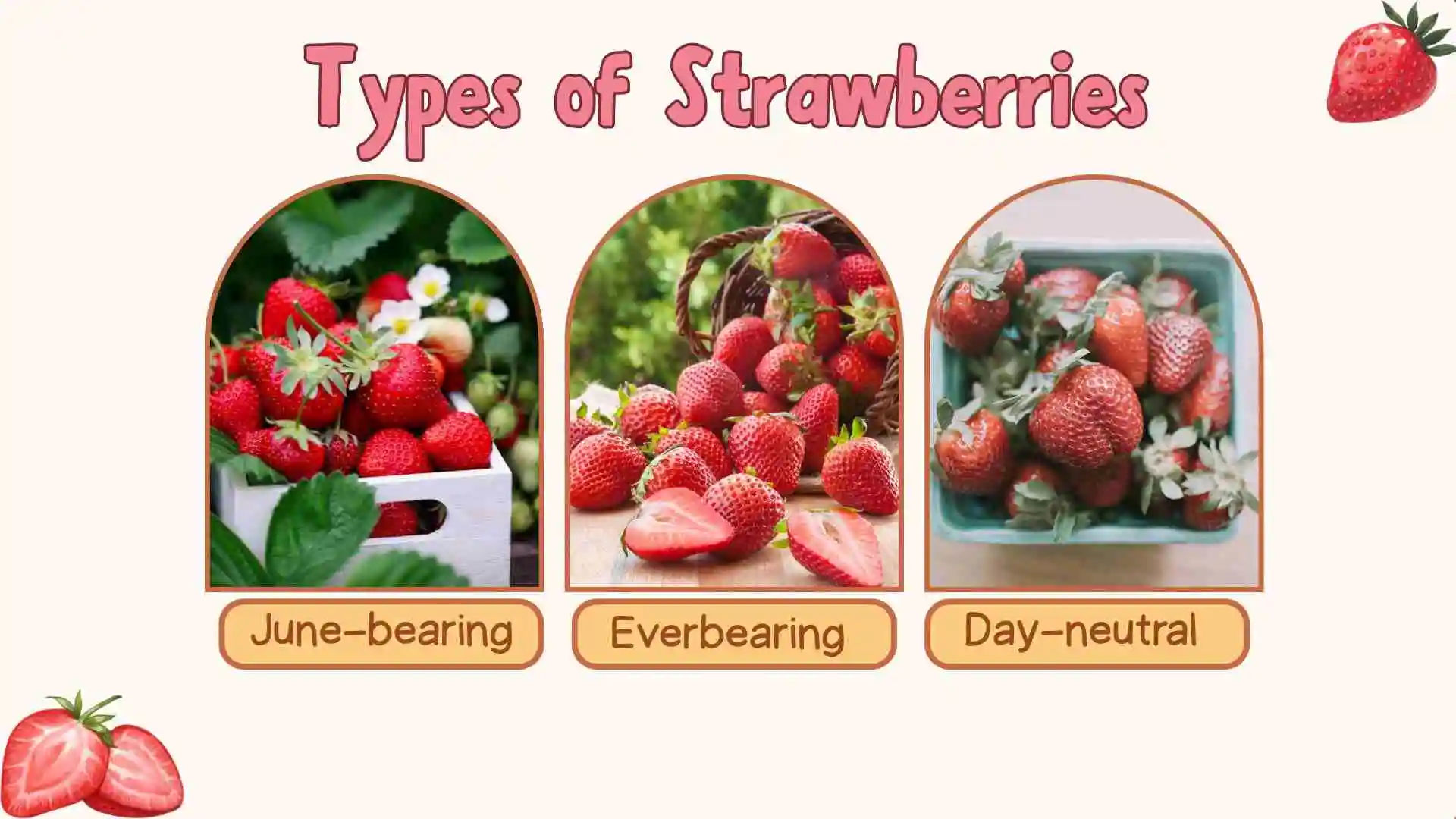
The Four Main Types of Strawberry Plants – A Breakdown
Strawberries come in four main types: June-bearing, everbearing, day-neutral, and alpine. June-bearing strawberries produce a large crop once a year in early summer. Everbearing varieties yield fruit multiple times a year, while day-neutral strawberries provide fruit all season. Alpine strawberries are smaller, but they have a rich flavor.
Choosing the Right Strawberry Variety for Your Growing Zone
Select strawberries based on your local temperature and growing conditions.
Conclusion
Strawberry home gardening is an enjoyable and rewarding experience. With the right care, you can easily harvest fresh, delicious strawberries from your own garden or containers. Whether you have a small balcony or a large garden, strawberries are perfect for any space.
By selecting the best variety for your climate, preparing the soil properly, and following essential care tips, you can enjoy a bountiful harvest. Regular maintenance, such as proper watering, mulching, and pruning, will ensure healthy strawberry plants and plenty of fruit. So, take the time to care for your strawberries, and you’ll be rewarded with sweet, fresh berries year after year.


